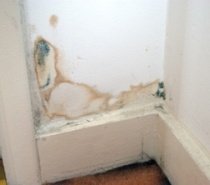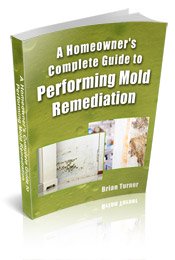Find a Mold Specialist Now
Click or Call, Toll-Free 24/7
Mold and Mildew Removal
Mold and mildew removal may be more complicated than you think. Mold and mildew control may also be more important that you realize, because mold can cause a wide range of health problems, especially in children and elderly people.
Removing Mold and Mildew
Removing mold and mildew is complicated for a couple of reasons.
For one thing, mold often grows in places where you can’t see it and can’t easily reach it. It’s difficult to remove mold that’s growing inside your walls or inside your heating ducts. Many people don’t even realize they have mold growing in those places.
Another issue is that the process of removing mold and mildew can actually increase the risk of mold-related illnesses. When you scrub mold or remove moldy materials like insulation or carpet, mold spores drift up into the air. If you inhale mold spores, you can get sick. In addition, if mold spores land in other places in your house, mold may begin to grow there, simply making your mold problem worse instead of better.
Mold and Mildew Control
There are a number of steps you can take to control the growth of mold and mildew in your home. Mold and mildew control is important because without taking steps to prevent mold from growing again, you’ll probably soon find yourself facing the same problem again.
- Fix any leaks in your roof.
- Fix any leaky pipes.
- Fix any other places where water can get into the house, such as leaks around windows or in the foundation.
- Make sure there is adequate ventilation in your bathroom since the room can become very moist when you shower.
- Don’t use carpet on your bathroom floor since the room can become so moist when you shower.
- Use a dehumidifier in areas that are moist if you can’t prevent moisture from entering the area. Pay special attention to your basement.
- Address any mold and mildew problem as soon as you become aware of it. It certainly won’t go away by itself, and the longer you let it go on, the more the mold will grow and spread. Mold that begins growing on your bathroom wall may also spread to places where it’s more difficult to remove it, like in your heating vents or in your walls.

Mold and Mildew Removal Professionals
The Environmental Protection Agency says that you should call a mold and mildew removal professional if you have mold that covers an area bigger than three feet by three feet. They also say you should call a professional if you think the mold might have grown as a result of contaminated water. For instance, if your sink leaks, the water is probably not contaminated, but if your toilet leaks, the water may be contaminated by sewage and then you should call in a professional.
If you have any type of respiratory problem or problem with your immune system, it’s probably also a good idea to have a professional handle your mold problem instead of attempting to deal with it yourself because you’ll be more susceptible to mold-related health problems than someone without those health issues. Mold and mildew removal specialists also have all the appropriate safety gear to protect themselves when dealing with mold.
Mold removal specialists can also talk to you about mold and mildew control methods to prevent mold from coming back. Remember, you always need to address mold and mildew control after removing mold because mold grows in a house for a reason. If you don’t address the cause, mold will grow back.
Finding a Mold Removal Specialist
Follow the link to find a list of qualified mold removal specialists near you. These experienced mold removal specialists will provide a free consultation, coming to your home to assess the situation and let you know the recommended steps to resolve your mold and mildew problem. They will address any safety concerns related to the mold growth in your home and the recommended removal process. Some professional advice will benefit you even if you decide to handle the job yourself.
Return From Mold And Mildew Removal To Our How To Remove Mold Page
Black Mold Health Symptoms Home Page





